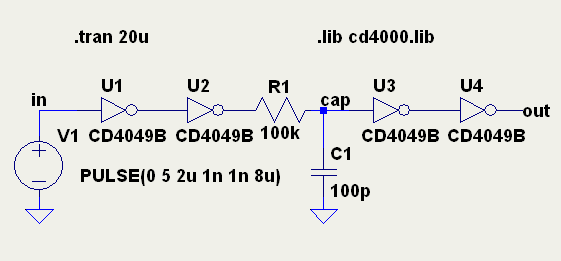I'm trying to design an integrated circuit that can implement a delay of approximately 100 ns, working with a 180nm process. With this process, an inverter has a delay of picoseconds, so it would require too many of them in a chain to achieve such a delay. I decided to use the following circuit
It is acheiving the delay I was looking for. However, the delay is just for the low-to-high transition, in the high-to-low the delay is much lower, and I can't understand way. Here are figures of the circuit used for simulation and the results
Any explanation for the behaviour? I was expecting it to have the same delays. The inverters are ratioed Wp/Wn = 2 to achieve symmetrical propagation delays.





